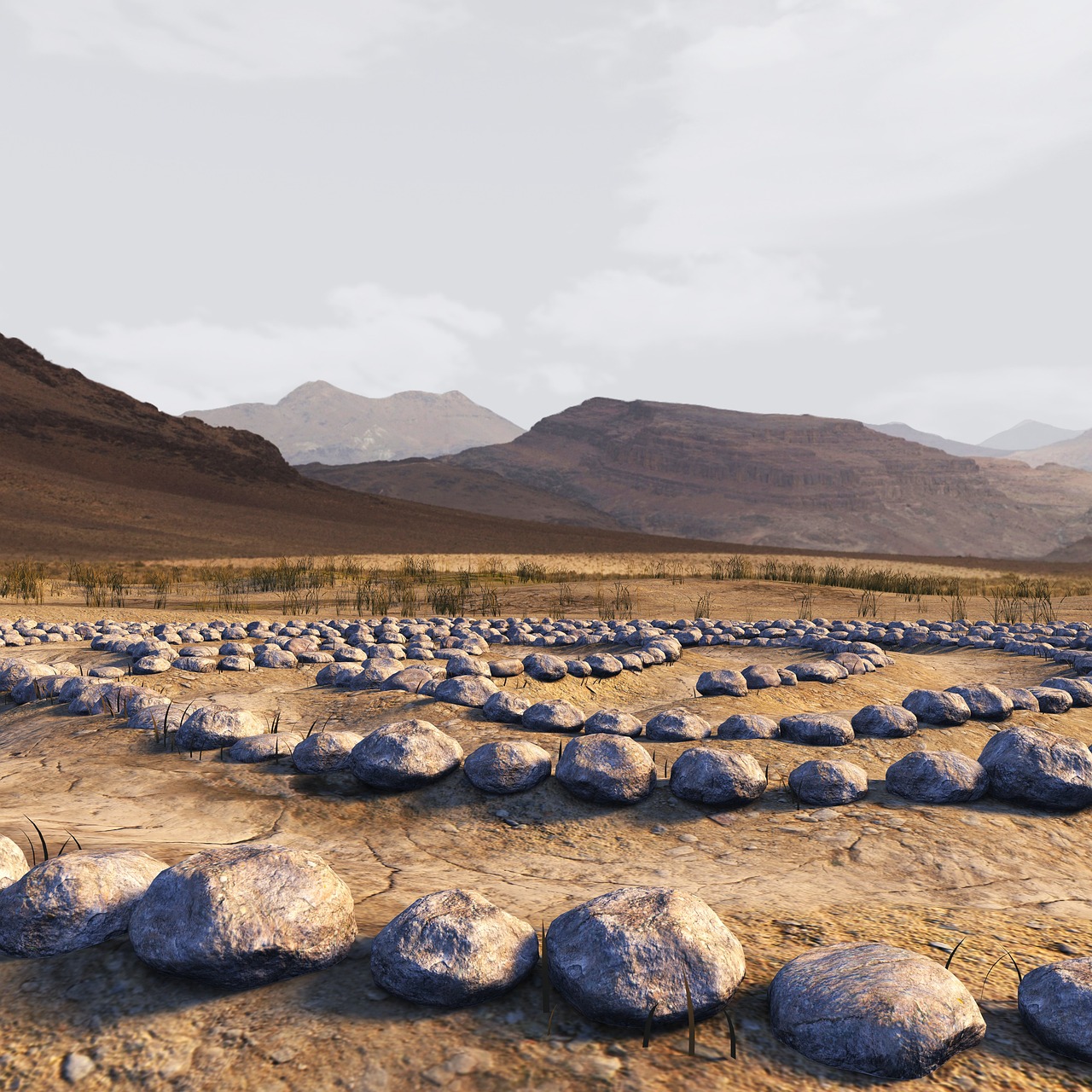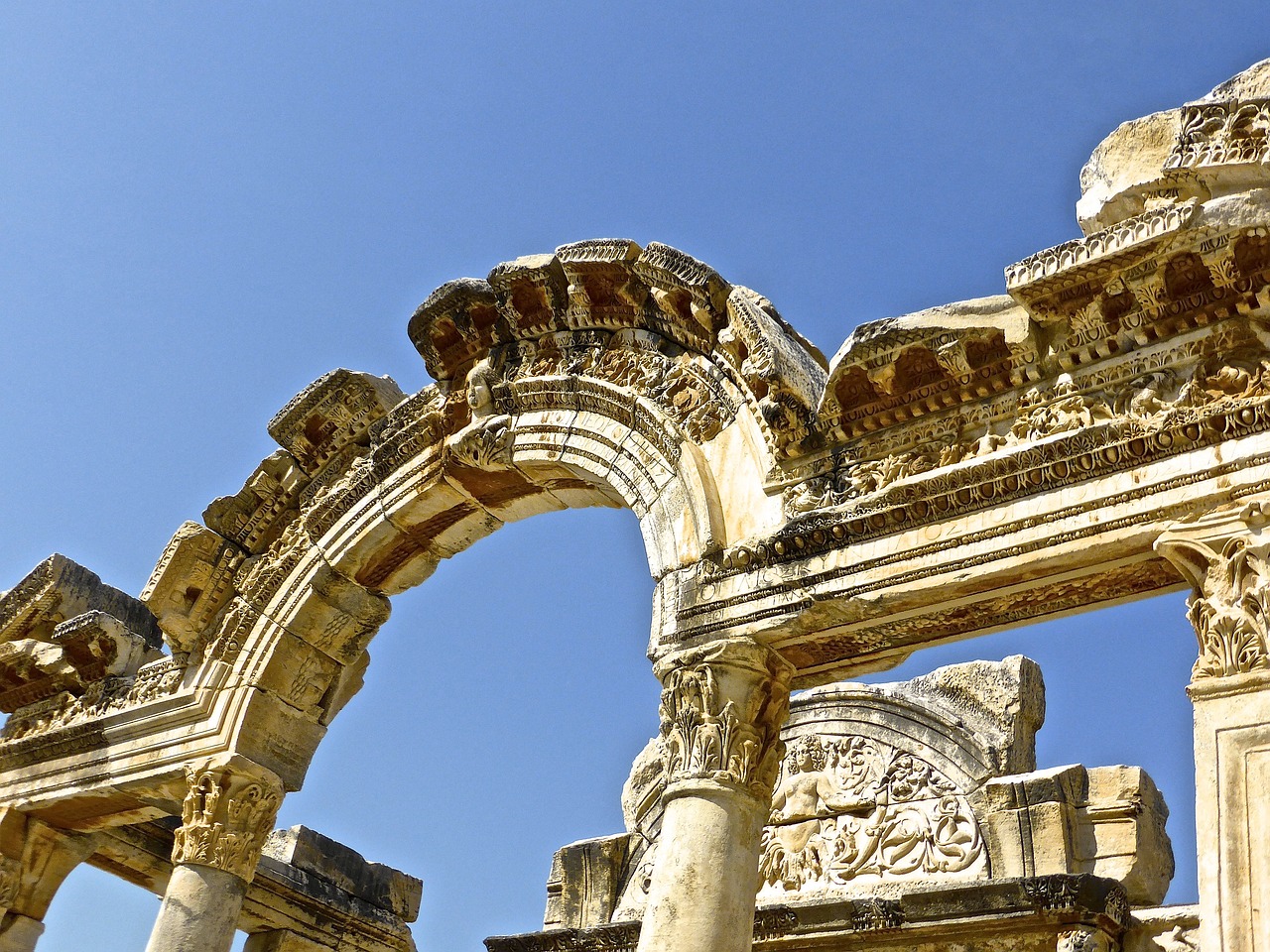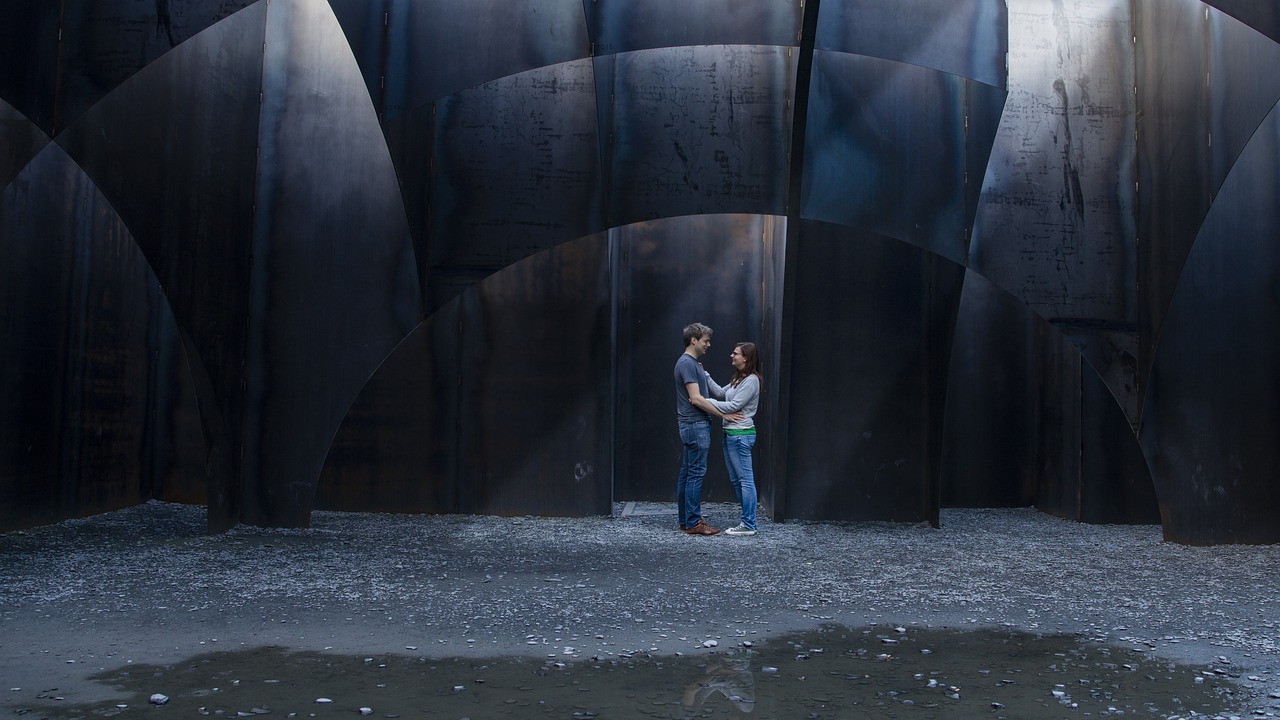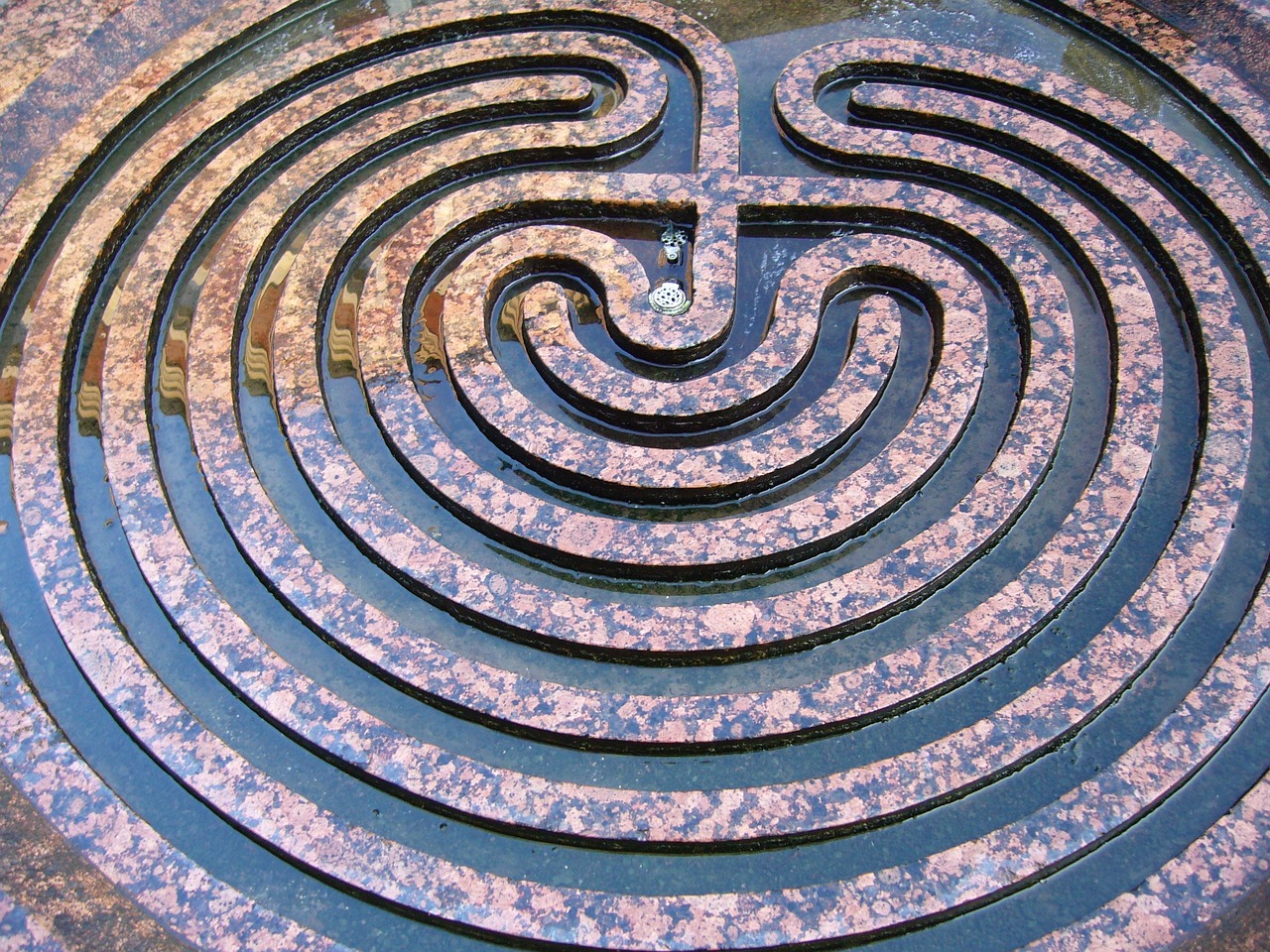The Secrets of the Labyrinth of Crete
Deep within the heart of Crete lies a mysterious labyrinth shrouded in legends and secrets, captivating the imagination of all who dare to explore its enigmatic corridors. This ancient marvel, believed to have been constructed by the ingenious Daedalus, holds within its walls a tapestry of history, myth, and intrigue.
The Labyrinth of Crete stands as a testament to the ingenuity of its creator, Daedalus, a master craftsman and inventor of unparalleled skill. The intricate design of this labyrinthine structure has puzzled scholars and historians for centuries, sparking debates about its purpose and complexity.
Legend has it that the Labyrinth of Crete was home to the fearsome Minotaur, a monstrous creature with the body of a man and the head of a bull. Imprisoned within the maze by King Minos, the Minotaur struck fear into the hearts of all who heard its name, becoming a symbol of power and terror.
One of the most famous tales associated with the labyrinth is that of Daedalus and his son Icarus. Their daring escape from the maze, aided by wings crafted from feathers and wax, ended in tragedy as Icarus flew too close to the sun, his wings melting and plummeting him into the sea.
Delving into the historical significance of the Labyrinth of Crete reveals its connection to the ancient Minoan civilization and its possible role as a symbol of power, control, and mystery. Beyond the realm of myth and legend, this labyrinth holds a key to understanding the cultural and architectural achievements of its time.
Archaeologists have long been intrigued by the secrets hidden within the labyrinth, embarking on expeditions to uncover its mysteries and shed light on its enigmatic past. Recent discoveries have provided new insights into the structure and function of this ancient marvel, sparking further interest and speculation.
The symbolism of the Labyrinth of Crete transcends time and culture, inspiring artists, writers, and philosophers with its intricate patterns and hidden meanings. Its presence in literature, art, and philosophy reflects a deep fascination with the unknown and the quest for enlightenment.
In the modern world, the legacy of the Labyrinth of Crete lives on, influencing contemporary culture through its portrayal in films, literature, and popular imagination. Its enduring allure continues to captivate audiences and spark curiosity about its origins and purpose.
Moreover, the labyrinth plays a vital role in tourism on the island of Crete, drawing visitors from around the world to explore its ancient corridors and unravel its mysteries. Preserving the cultural heritage of this enigmatic structure ensures that future generations can experience the wonder and intrigue of this legendary maze.

Origin and Construction
Exploring the mysteries and legends surrounding the ancient Labyrinth of Crete, said to have been built by Daedalus. Unraveling the historical significance and possible truths behind the mythological stories associated with this legendary maze.
Delving into the origins of the Labyrinth of Crete, its architectural design, and the legendary figure of Daedalus who is credited with its construction.
The Labyrinth of Crete, a marvel of ancient architecture, is shrouded in mystery and intrigue. According to legend, this intricate maze was crafted by the skilled hands of Daedalus, a master craftsman of unparalleled talent. The very design of the labyrinth is said to be so complex that once inside, one could easily become lost forever, a testament to Daedalus' ingenuity and craftsmanship.
Daedalus, often portrayed as a genius inventor, is credited with creating the labyrinth under the command of King Minos of Crete. The structure is believed to have been a vast, winding network of corridors and chambers, designed to confound and trap all who dared to enter. Its construction, a feat of engineering prowess, has captivated historians and archeologists for centuries.
While the exact layout and dimensions of the Labyrinth of Crete remain a subject of debate among scholars, its reputation as a marvel of ancient architecture is undisputed. The intricate design and construction of this legendary maze continue to fascinate and inspire awe, serving as a testament to the ingenuity of the ancient civilizations that once thrived on the island of Crete.

Mythology and Minotaur
The mythology surrounding the Labyrinth of Crete is intricately linked with the terrifying Minotaur, a creature with the body of a man and the head of a bull. According to ancient tales, the Minotaur was imprisoned within the labyrinth as a form of punishment. This monstrous being was said to have been the offspring of Queen Pasiphae of Crete and a majestic bull, resulting from a curse placed upon the queen by Poseidon.
Legend has it that the Minotaur was fed a tribute of young men and women from Athens, who were sent as sacrifices to be devoured by the beast. Theseus, the courageous hero of Athens, ventured into the Labyrinth with the help of Princess Ariadne, who provided him with a ball of thread to navigate the maze and defeat the Minotaur.
The tale of the Minotaur symbolizes the eternal struggle between civilization and savagery, highlighting the primal instincts that lurk within humanity. The Labyrinth itself serves as a metaphor for the complex and intricate nature of the human psyche, where one must confront inner demons and fears to find a way out.
Through the myth of the Minotaur and the Labyrinth, ancient storytellers conveyed profound truths about the human condition, exploring themes of heroism, sacrifice, and the eternal quest for redemption. The enduring power of this myth continues to captivate audiences and inspire creative interpretations in contemporary culture.

Daedalus and Icarus
Daedalus, the skilled craftsman and architect of the Labyrinth of Crete, found himself imprisoned within his own creation by King Minos. Desperate to escape, Daedalus devised a daring plan that involved crafting wings made of feathers and wax for himself and his young son, Icarus. As they soared through the air, the exhilarating freedom was both a triumph and a tragedy waiting to unfold.
The tale of Daedalus and Icarus serves as a cautionary reminder of the consequences of hubris and disobedience. Despite his father's warnings, Icarus, consumed by the thrill of flight, flew too close to the sun. The wax holding his wings together melted, sending him plummeting into the sea below, a poignant reminder of the fleeting nature of pride and ambition.
Daedalus, grief-stricken by the loss of his son, continued his journey alone, haunted by the echoes of his past. The bond between father and son, woven with intricate threads of love and tragedy, resonates through the ages as a timeless tale of daring escape and heart-wrenching loss.

Historical Significance
The of the Labyrinth of Crete delves deep into the intriguing past of this ancient structure within the context of the Minoan civilization. Historians and archaeologists have long debated the true purpose of the labyrinth, with theories ranging from a complex architectural marvel to a symbolic representation of the Minoan society's intricate social structure. Some believe that it served as a center for religious ceremonies, while others suggest it may have been a royal palace or even a prison for political dissidents.
One of the most fascinating aspects of the Labyrinth's historical significance is its potential influence on later civilizations. The intricate layout and design of the maze have inspired numerous architectural marvels and artistic representations throughout history. Its presence in ancient texts and artworks showcases its enduring impact on the collective imagination of humanity, transcending time and culture.
Furthermore, the Labyrinth of Crete holds a special place in the annals of mythology, with its connection to the Minotaur and the legendary figure of Daedalus adding layers of intrigue to its historical significance. The intertwining of myth and reality surrounding the labyrinth continues to captivate scholars and enthusiasts alike, prompting ongoing research and exploration to uncover the truth behind the ancient maze.

Exploration and Archaeological Discoveries
Exploring the mysteries and legends surrounding the ancient Labyrinth of Crete, said to have been built by Daedalus. Unraveling the historical significance and possible truths behind the mythological stories associated with this legendary maze.
Embarking on a journey into the depths of history, archaeologists have tirelessly sought to reveal the hidden truths of the enigmatic Labyrinth of Crete. Through painstaking excavations and meticulous research, these modern-day explorers have unearthed tantalizing clues that shed light on the labyrinth's ancient secrets.
One of the most significant archaeological discoveries related to the Labyrinth of Crete is the excavation of the Palace of Knossos. This sprawling complex, believed to have been the center of Minoan civilization, is intricately linked to the myth of the labyrinth and the Minotaur. The intricate architecture and elaborate frescoes found within the palace offer valuable insights into the cultural and artistic achievements of the Minoans.
Archaeologists have also uncovered a network of underground chambers and passageways beneath the Palace of Knossos, leading to speculation that these subterranean structures may have served as the inspiration for the labyrinth described in ancient myths. The intricate layout of these underground spaces hints at a complex architectural design that mirrors the legendary maze constructed by Daedalus.
Recent archaeological findings have further deepened our understanding of the Labyrinth of Crete, challenging conventional interpretations and opening new avenues of exploration. Through the use of advanced technologies such as ground-penetrating radar and 3D mapping, researchers continue to unravel the mysteries concealed within the labyrinth's ancient walls.
The ongoing archaeological investigations surrounding the Labyrinth of Crete not only enrich our knowledge of the past but also spark our imagination, inviting us to delve into the realm of myth and reality intertwined within this ancient maze.

Symbolism and Interpretations
The Labyrinth of Crete holds a rich tapestry of symbolism and interpretations that have fascinated scholars, artists, and philosophers for centuries. In various cultures, the labyrinth has been seen as a metaphor for life's journey, with its twists and turns representing the challenges and choices individuals face. Some interpret it as a symbol of transformation and self-discovery, where one must navigate through complexity to find inner truth.
Within literature, the labyrinth often signifies the human psyche, with its hidden depths and intricate pathways mirroring the complexities of the mind. Artists have depicted the labyrinth as a visual motif, exploring themes of mystery, confinement, and the quest for meaning. Philosophers have pondered its philosophical implications, debating the nature of free will, destiny, and the search for enlightenment.
Moreover, the labyrinth's association with the Minotaur adds layers of interpretation. The monstrous creature trapped within its walls can be seen as a representation of our inner demons, the fears and desires that lurk within us. The myth of Theseus and the Minotaur, where bravery and cunning triumph over brute force, offers a narrative of courage and overcoming adversity.
Across cultures, the labyrinth has been linked to themes of mystery, initiation, and spiritual growth. Its intricate design invites contemplation and meditation, inviting individuals to reflect on their own paths and choices. The labyrinth's timeless appeal lies in its ability to evoke a sense of wonder and introspection, inviting us to ponder the mysteries of existence and the journey of life.

Modern-Day Influence
The enigmatic Labyrinth of Crete, with its intricate design and mythical associations, continues to captivate modern-day culture in various forms. From literature to cinema, the influence of this ancient maze extends far beyond its historical origins.
One significant aspect of the Labyrinth's modern-day impact is its portrayal in films and television series. The maze has been featured in numerous movies, each offering a unique interpretation of its mysteries and challenges. These cinematic representations often blend historical elements with fantastical narratives, adding to the allure of the Labyrinth.
In literature, the Labyrinth serves as a powerful symbol of complexity and hidden truths. Many authors draw inspiration from the mythological stories surrounding the maze, incorporating its themes of mystery and discovery into their works. The Labyrinth becomes a metaphor for life's journey, where one must navigate through twists and turns to find meaning and purpose.
Moreover, the Labyrinth of Crete continues to spark the imagination of artists and philosophers alike. Its intricate structure and enigmatic history have inspired countless artistic interpretations, from paintings to sculptures. Philosophers often use the Labyrinth as a symbol of philosophical inquiry, representing the search for truth and enlightenment amidst a maze of uncertainties.
Furthermore, the cultural significance of the Labyrinth is evident in its impact on tourism in Crete. The maze attracts visitors from around the world, eager to explore its ancient corridors and unravel its secrets. Tourism centered around the Labyrinth not only boosts the local economy but also serves to preserve the island's rich cultural heritage for future generations.

Tourism and Cultural Heritage
When it comes to tourism and cultural heritage, the Labyrinth of Crete stands as a captivating symbol of ancient mystery and intrigue. Tourists flock to the island of Crete, drawn by the allure of exploring the remnants of this legendary maze, steeped in myth and history. The cultural significance of the Labyrinth extends beyond its physical structure, serving as a testament to the rich heritage of the Minoan civilization that once thrived in this region.
Visitors are often mesmerized by the tales of Daedalus and the Minotaur, eager to immerse themselves in the stories that have been passed down through generations. The Labyrinth serves as a focal point for cultural enthusiasts, historians, and curious travelers seeking to unravel the enigmatic past of ancient Crete. Its presence on the island not only attracts tourists but also serves as a reminder of the enduring legacy of a bygone era.
Exploring the Labyrinth of Crete offers visitors a unique opportunity to delve into the depths of history and mythology, providing a glimpse into the ancient world that continues to captivate imaginations today. The preservation of this archaeological site is crucial in maintaining the cultural heritage of Crete and safeguarding it for future generations to appreciate and cherish.
As tourism continues to thrive on the island, the Labyrinth remains a cornerstone of Crete's cultural identity, drawing in visitors from around the globe who are eager to uncover its secrets and experience the magic of this ancient marvel. The intersection of tourism and cultural heritage at the Labyrinth of Crete creates a dynamic tapestry of exploration, education, and appreciation for the wonders of the past.
Frequently Asked Questions
- What is the Labyrinth of Crete?
The Labyrinth of Crete is an ancient maze located in Crete, Greece, known for its association with the myth of the Minotaur. It is said to have been constructed by Daedalus, a legendary figure in Greek mythology.
- Who was Daedalus?
Daedalus was a skilled craftsman and inventor in Greek mythology, credited with designing the Labyrinth of Crete to contain the Minotaur. He is also known for creating wings for himself and his son Icarus to escape imprisonment.
- What is the connection between the Labyrinth and the Minotaur?
The Labyrinth of Crete was built to house the Minotaur, a half-man, half-bull creature born from the union of Pasiphae, the wife of King Minos, with a bull. The Minotaur was eventually slain by the hero Theseus.
- Is the Labyrinth of Crete a real historical site?
The existence of the physical Labyrinth of Crete as described in mythology is debated among historians and archaeologists. While the maze itself may not have existed, the mythological and symbolic significance of the Labyrinth persists.
- How has the Labyrinth influenced modern culture?
The Labyrinth of Crete has inspired various forms of art, literature, and popular culture. Its symbolism as a complex and puzzling structure continues to captivate audiences and influence creative works to this day.



















